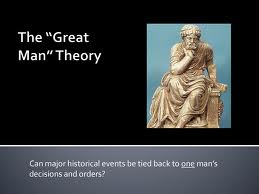Leadership

Introducing change and improvements regularly in various business processes has become one of the basic conditions of survival in a competitive global marketplace of today. However, even when the importance and necessity of change is understood by many its implementation in practice is associated with a set of substantial challenges caused by a range of reasons such as loss of power, fear of unknown, job security, economic factors etc. (Zimmerman, 2011). This article analyses and evaluates diversification strategies implemented in Ford Motor Company by its President and Chief Executive Officer (CEO) Alan Mulally. Ford Motor Company is global auto manufacturer that employs about 164,000 members of workforce in about 70 plants worldwide (Annual Report, 2011). The article covers three main themes: main drivers of change in Ford, key changes introduced by Alan Mulally, and an analysis of change management style of Alan Mulally. Main Drivers of Change in Ford Motor Company By 2006 when Alan Mulally was appointed Ford President and CEO there were a set of stark drivers of change. Specifically, at the time among other issues “Fords major problems was consensus management in the process of designing automobiles” (Herbold, 2011). For example, Ford Fusion sedan introduced in the same year was not equipped with navigation and side air bags, despite the fact that most of the competitor cars of the same class were equipped with such accessories. Analysis conducted by Mulally has identified that the main reason behind such a practice was high level of involvement of finance department over the design and functionality of cars (Fuller, 2011). In other words, in order to bring down the costs of manufacturing, finance department have been asking engineers and designers to be engaging in excessive cost saving when designing cars and equipping them with technological gadgets and functionalities.…

Constant organisational change in order to address increasing customer demands has become one of the basic realities of modern marketplace. However, it has been stated that “most efforts by executives, managers, and administrators to significantly change the organisations they lead do not work” (Burke, 2011, p.11). There is a wide range of reasons for this that primarily relate to the leadership style of organisational leaders, as well as, their abilities to embrace and practice the changes they promote as a role model. This article critically analyses the main sources of motivation for senior management interest in the concept of transformational leadership. The article starts with discussing the main characteristics of transformational leadership and provides explanations for growing senior management interest in the concept along a wide range of industries in the global marketplace. This is followed by in-depth discussions about relationships between transformational leadership style and change within organisations. A greater scope for the essay has been achieved through discussing a range of relevant change management concepts and theories that include Kurt Lewin’s change process, Burke-Litwin change model, and Kotter’s eight steps change tool. Main Characteristics of Transformational Leadership Increasing numbers of managers at all levels are expressing growing interest in the concept of transformational leadership and the principles of transformational leadership are being adopted by increasing numbers of executives with varying degree of success (Lindebaum and Cartwright, 2010). Transformational leadership has been defined as “style of leadership in which the leader identifies the needed change, creates a vision to guide the change through inspiration, and executes the change with the commitment of the members of the group” (Business Dictionary, 2012, online). In other words, transformational leadership places great emphasize on organisational change, and accepts organisational change to be an integral part of organisational strategy. Advantages of transformational leadership…

The emergence of contingency theories of leadership as a new major leadership paradigm is associated with the recognition in the late 1960s that no one best leadership style was available that was equally effective in all situations (Fitzimons et al., 2011). A clear distinction has to be made between leadership theories and models in order to avoid misunderstandings. As Lussier and Achua (2011) inform, theories of leadership is an explanation of a specific aspect of the practice of leadership, whereas leadership model involves an example of implementation of the theory in a particular situation. Contingency theories of leadership “attempt to explain the appropriate leadership style based on the leader, followers and situation” (Lussier and Achua, 2010, p.152) Contingency leadership model can be described as “a model used to determine of leadership style is task- or relationship-oriented and if the situation matches the style” (Lussier, 2011, p.338). Three variables of contingency theories of leadership are leader, followers, and situation, and the basic idea behind contingency theories of leadership is that the level of effectiveness of a leader depends on how well the style of the leader fits the organisational context. Contingency theories of leadership focus on specific situational factors such as people, task, strategies, etc. Fiedler’s contingency theory, path-goal theory and situational leadership theories belong to contingency theories of leadership. The case for the relevance of contingency theories of leadership to today’s business world can be effectively illustrated by referring to the story of Indra K. Nooyi, Chairman and Chief Executive Officer of PepsiCo – one of the leading global food and beverage company. Growing up in Chennai, India, obtaining BS degree from Madras Christina College, and an Master’s Degree from Yale University, USA, being engaged in corporate strategy and marketing fields with Motorola, Asea Brown Bovri, and PepsiCo, Ms. Nooyi…

Sosik and Godshalk (2000) inform that transformational leadership theory has evolved once rapidly intensified level of competition in the global level has revealed serious shortcomings of transactional leadership style. Namely, changing market conditions have necessitated increased level of involvement of employees at all levels for decision making, a well as, the level of motivation of the workforce has become the matter of survival for many industries in the global marketplace. The main characteristics of transformational leaders are specified by Khanin (2007) as highly receptive of their followers’ needs and wants, as well as, striving for their professional development at various fronts that would result in followers eventually replacing leaders in the future. Moreover, Walumba and Hartnell (2011) justly attribute high achievement of transformational leaders to their attractive behaviour, charisma, and the ability to motivate their followers. Also, the role of organisational vision that is shared by all members of the workforce is stressed by Garcia-Morales et al (2008), who rightly specify the adoption of transformational leadership as an effective method of motivating workforce through developing and communicating the vision. The main distinction between transformational and transactional leadership styles can be specified as the ability of the former style to address higher, intangible needs of employees as well as material needs the latter style is mainly associated with. In other words, transformational leaders promote creativity, positive team spirit and challenging working environment, thus achieving increased level of performance through highly motivated workforce. However transformational leadership style can be time consuming process before they provide positive results, and they also create potential for abuse among certain members of the workforce. Specifically, the elements of sensitivity and gentleness expressed by transformational leaders might be perceived to be signs of weaknesses among specific members of the workforce due to their cultural differences, individual temperament…

Organisational Linkages in Pepsi According to Malloch (2004) honest leadership was the distinctive trait of CEO of Pepsi that was especially well expressed in Steve Reinemund. The secret of Reinmund’s leadership, according to the author, was his ability to recognise the personal aspirations of his employees and linking these aspirations with organisational objectives. Honesty is considered to be one of the leadership traits that can be adopted by other organisations as a result of organisational linkages with them “Linkage analysis calls attention to ways of translating local gains into broader organisational benefits” (Goodman and Rousseau, 2004, p.3). Organisational linkage can be undertaken by linking effective leadership practices within Pepsi into other companies within various industries. For, instance leadership development initiatives that proved to be highly successful for Pepsi can be implemented by other companies as well, in order to achieve similar results. Collins (2010) mentions intensive rivalry between Pepsi and Coca Cola when analysing the leadership style in Pepsi and states that Coca Cola Company have to spend enormous amount of financial resources in their attempts to stay ahead in competition, whereas in Pepsi effective leadership style often results in gaining competitive edge for the company in many aspects with less financial resources spent. This example is a clear illustration of the importance of effective leadership. Efficient leadership not only has intangible positive impacts within organisations such as motivated employees and energised environment, but also has a direct positive impact on organisations in terms of financial gains which can be seen from the case of Pepsi. Explaining the reasons of efficiency Pepsi medium and strategic level managers operate in Cummings and Worley (2008) argue that Pepsi web-based manager development programs such as MyDevelopmentNet and MyCareerConnection play important role. These and similar programs can also be adopted by many businesses, as…

Attitude is of primary importance for Kuyumi (2007, p.27), who insists that whatever leadership traits and abilities a person has, their successful application depends on a leader’s attitude to his work and workers. One of the most respected and experienced leadership scholars Posner (2002, p.27) claims, that in almost every survey he has conducted since the early 1980’s, although with varying percentages, honesty has topped the list Lutz (2005, p.44) believes integrity to be the cornerstone of leadership traits and insists that most effective leaders have a code, according to which they live, and they do not waver from it. Many authors have singled out passion as one of the compulsory ingredients of leadership characteristics. Davies (2007, p.16) believes passion to be seen in terms of passion for social justice, passion for learning and passion to make a difference. And he highlights the passion to make a difference as a key instrument to turn believes into reality and as the mark of sustainable leadership. Stressing the importance of vision Kumuyi (2007, p.9), reminds about the vulnerability of the vision and warns that ‘vision can’t be held sacrosanct’. The importance of the ability to have a vision and communicate the vision to all stakeholders of the company has been highlighted by many authors including Pockell and Avila (2007) and Parks (2005). The authors state that the ability to formulate and communicate the vision and making sure that the vision is shared by each member of the workforce can be considered as a cornerstone of effective leadership because it will result in increased level of motivation and performance among workforce. Effective communication skills, Frank (1993, p.386) argues, is the hallmark of an effective leader, and he clarifies, that this particular skill can be developed through education and practice. Northouse (2007) also considers communication skills…

The jobs of managers consist of getting things done by others. Their efficiency can increase significantly if employees respect them and follow their order not because employees have to do it, but because they trust their manager and are motivated by them. Such a scenario can take place only when managers are leaders at the same time. Wesley (2007, p.48) provides a simple and comprehensive definition of leadership as ‘the art of persuading other fellow to do what we want him to do’. Another definition of leadership is proposed by Fred Smith, recited by Pockell and Avila (2007, p.83), who defines the leadership as the ability of getting people work for us when they are not obliged to. Harvey (2001, p.37), defines a leader as an individual, who facilitates the movement of a group of people by his actions toward a common goal. The scientific study of leadership is divided by Heilbrunn (1994, p.65) into three phases: 1900 – World War II. Researchers attempt to identify traits of leaders in order to study charisma. World War II – 1970s. Main focus of leadership researches are behaviour of leaders. 1970’s – present (date of publication).Interaction between leaders and followers are being studied. According to Burns (1978, p.142) transformational leadership is a relationship of shared stimulation and elevation, and that relationship can change followers into leaders and leaders into moral agents. Bass and Avolio (1990, p.88) specify four principles of Transformational leadership as: Idealised influence Inspirational motivation Individualised consideration Intellectual stimulation References Bass, BM. & Avolio, BJ, 1990, “The Implications Of Transactional And Transformational Leadership For Individual, Team, And Organizational Development”, Research in Organizational Change and Development, Vol. 4 pp.231-72. Burns, JM, (1978), ‘Leadership’, New York: Harper/Row Harvey, M, 2001, ‘The Hidden Force: A Critique of Normative Approaches to Business Leadership’, SAM Advanced…

Heilbrunn (1994, p.65) divides scientific study of leadership into three phases: 1. 1900 – World War II. Researchers attempt to identify traits of leaders in order to study charisma. 2. World War II – 1970s. Main focus of leadership researches are behaviour of leaders. 3. 1970’s – present (date of publication). Interaction between leaders and followers are being studied. Focusing on the traits associated with great leaders, Frank (1993, p.382) informs that earliest studies of leadership had theoretical underpinning which stated that leaders are born, not bred and this research prevailed throughout the first half of the 20th century. Woods (2005, p.1103) informs that early approaches to the topic of leadership highlighted personality traits of key people as critical, which serves as a basis for The Great Man Theory. The Theory advocates the notion of ‘born leaders’, insisting that great leaders possess special skills, intelligence, trait and characteristics, which allow them to take competent decisions and lead the rest of the crowd, whatever a situation or environment might be. However, Adair (2007) informs that “Great Man Theory” has been found invalid in 21st century as nowadays, the majority of business researchers and practitioners believe that anyone can learn leadership skills and abilities with the presence of sufficient level of motivation. Parks (2005, p.4) informs that traditional understandings of leadership up to now have focused on personality characteristics, situation analysis and transaction of power and influence, but brands the notion of born leaders as inadequate, claiming that, at present, growing consensus among leadership theorists justify her stand. Various authors have offered their opinions regarding the fundamental essence of leadership. For instance, it has been stated that “fundamental core of global leadership consists of self-awareness, engagement in personal transformation, and inquisitiveness” (Mendenhall, 2008, p.54) References Adair, J, 2007, Effective Leadership Development, Chartered…

Background study of the case (abstract) The formulation of a winning modern strategy and its effective implementation can result in success for profit oriented businesses, non-profit organizations and even political parties alike. The clear proof is the success of British labour party in general elections of 1997 after long years being out of power due to “old way thinking”, non-innovative approach and conflicts of interests within the party itself. All of these were changed once the future youngest prime minister since 1812 Tony Blair became the leader of the party in 1994. With the appointment of the young party leader many things changed within the party. One of the first things Tony Blair did as the party leader was to formulate a clear strategy and to adapt a business-like approach to lead the Labour party. He appointed competent, open-minded people in key positions, recognized and addressed the interests of all stakeholders and identified Labour party’s customer segments tasking into account unique interests of each segment group. All of these strategic decisions provided success for the Labour party. Introduction The present work aims to analyse the successful strategy which was adopted and implemented by Labour party under the leadership of Tony Blair with assistance from Tom Sawyer and other members of the team. Background of the case (abstract) provided at the beginning of the work to familiarize the reader with the topic of the case and to provide general background information in brief which was followed by introduction to the work. Analysis of the case is also undertaken in more detail to review key strategic decisions made by Labour party leaders, motives behind them, barriers for their implementations and outcomes after implementing those decision. This is followed by critical view and answer to questions based on the model.. Explanation is…
